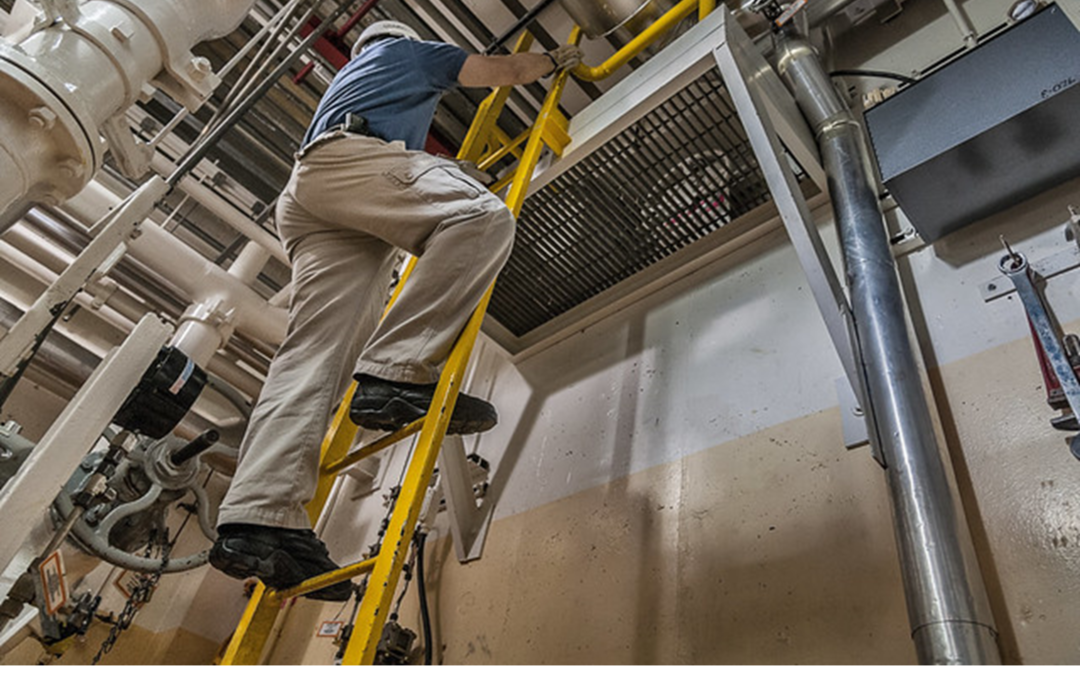Slips, trips, and falls constitute the majority of general industry accidents. They cause 15% of all accidental deaths and are second only to motor vehicles as a cause of fatalities. Active participation by management, supervisors and employees is necessary to prevent hazardous conditions that could result in slips, trips or falls. Occupational Safety and Health Administration (OSHA) standard 29 CFR 1910.21 through 1910.28 Subpart D outlines the duty of employers to provide protection for each employee exposed to fall and falling object hazards.
Safety Practices
Housekeeping
Some of the most frequently cited violations in Subpart D involve housekeeping:
- All places of employment, passageways, storerooms, and service rooms should be kept clean and orderly and in a sanitary condition.
- The floor of every workroom should be maintained in a clean and dry condition whenever possible. Where wet processes are used, drainage should be maintained and gratings, mats, or raised platforms should be provided.
- Every floor, working place and passageway should be kept free from protruding nails, splinters, holes, or loose boards.
Stairs and Ladders
- Fixed industrial stairs shall be provided for access to and from places of work where operations necessitate regular travel between levels.
- The chief hazard when using a ladder is falling. A poorly designed, maintained, or improperly used ladder may collapse under the load placed upon it and cause the employee to fall.
- A fixed ladder is a ladder permanently attached to a structure, building or
- equipment. Fixed ladders, with a length of more than 24 feet must be equipped with a cage, well, ladder safety device or be equipped for the use of Fall Protection Equipment.
Aisles and Passageways
- Aisles and passageways should be kept clear and in good repair with no obstruction across or in aisles that could create a hazard.
- Permanent aisles and passageways should be appropriately marked.
- Where mechanical handling equipment is used, aisles should be sufficiently wide. Improper aisle widths coupled with poor housekeeping and vehicle traffic can cause injuries, damage the equipment or material, and can limit egress in emergencies.
Covers and Guardrails
- Covers and/or guardrails shall be provided to protect personnel from the hazards of open pits, tanks, vats, and ditches.
Training
Not only is employee training an OSHA requirement, but training empowers employees to be the first line of defense. Employee training should consist of the following:
- The nature of fall hazards in the work area.
- The role of each employee in a safety monitoring system.
- The roles of employees in fall protection plans.
- The content of the OSHA standard.
- Retraining if employee is observed working unsafely or if new equipment or hazards are introduced in the work area.
A written record of all training activities must be maintained on site.
Our team of experts have over 50 years of experience assisting our clients with developing and implementing safety programs at their facility. Contact us today to set up a consultation!
Photo Source: This Photo by Unknown Author is licensed under CC BY

